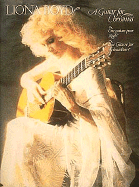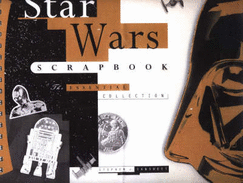Kateri Maloney is an aspiring historical eBook author. Follow her as she does research for her book with great tips for your historical writing!
Monday, December 30, 2013
Wednesday, December 25, 2013
History of Christmas Carols
 Each of us has memories coming from Christmas songs that we treasure since our childhood. As children, we never question these things, we just listen to them and grow to love them. Legend tells that the first Christmas hymn would have been sang when Jesus is born. Can you imagine that it is well over 2,000 years ago? However, it is only during the 1200's that Saint Francis of Assisi made Christmas songs published in a language understandable and spoken by everyone rather than Latin.
Each of us has memories coming from Christmas songs that we treasure since our childhood. As children, we never question these things, we just listen to them and grow to love them. Legend tells that the first Christmas hymn would have been sang when Jesus is born. Can you imagine that it is well over 2,000 years ago? However, it is only during the 1200's that Saint Francis of Assisi made Christmas songs published in a language understandable and spoken by everyone rather than Latin.As time has passed, there have been a lot of Christian leaders and parishioners who have make it common place to put on a show about Christmas and singing the carols have been a large part of the elaborate show. Christmas carols have been
added to the American culture from every English speaking country, from England to Australia.
Back in 1447 when Johannes Gutenberg conceived the mechanical printing press, this allowed for things to be copied in a fairly short amount of time which meant that the words and lyrics to the Christmas carols could be copied again and again and distributed, which is what made Christmas carols become so popular.
Naturally, around this same time Christmas and Christianity were a very big part of everyone's life. Unfortunately, the year 1649, Cromwell abolished all Catholic customs in England, including Christmas. When in 1661 Charles II restored these traditions, singing carols became one of the most popular traditions.
The largest part of well known Christmas carols have been written from the mid-1700s to the early 1800s and are still popular today. For instance, Frederich Handel performed the well known "Messiah" for the first time at a charity event in 1742.
As for "Silent Night", it has been written in 1818 by the Austrian Joseph Mohr and its original title was "Stille Nacht, heilige Nacht". The organ of his church had broken and he needed to write a song that could be accompanied by a guitar rather than this instrument and then, he wrote this marvelous Christmas carol.

 Today, it is easy to create a carol: when the holiday season arrives, artists as well as Hollywood produce their Christmas hymn. But we still have a preference for the flavours and the sounds of the old Christmas songs. Every one of us tends to stick to traditions and while we might like new carols none of them could ever take the place of oldies like We Wish You a Merry Christmas or Jingle Bells. While the number of Christmas carols we listen to is very large, almost none of them is a new one.
Today, it is easy to create a carol: when the holiday season arrives, artists as well as Hollywood produce their Christmas hymn. But we still have a preference for the flavours and the sounds of the old Christmas songs. Every one of us tends to stick to traditions and while we might like new carols none of them could ever take the place of oldies like We Wish You a Merry Christmas or Jingle Bells. While the number of Christmas carols we listen to is very large, almost none of them is a new one.So, this year, gather your family and friends around the tree and sing these beautiful carols; it is one of the greatest ways to celebrate the Christmas holiday.
I'm an European History, holly days and Tarot cards passionate. I write articles and create websites related to those topics. You will find more information and creative Christmas ideas that will help you make the most out of this Christian celebration at It's Christmas Time.
Article Source: http://EzineArticles.com/?expert=D._Halet Sunday, December 22, 2013
Christmas - Writing Santa Claus a Letter
Have you written Santa Claus a letter yet?
What are you waiting for time is of the essence? He is eagerly waiting to here from you wanting to know what you want for Christmas. Just because he knows what you want does not mean your going to get it.
Have you been naughty or nice? Which list are you going to be on? Yes, you know if you've been good or bad so make the necessary decision to put the items on your list that you really want.
Since this is for all ages everyone is encouraged to participate. Don't be shy or hesitate because you're afraid of what someone might say. Everything will be kept confidential between you and Santa Claus. Go ahead right now and write your letter and put it in the mail.
Start your list with the most important items first and then continue them in sequential order of importance. That way you'll get exactly what you expected to. Disappointed little children and grown ups is not what Santa Claus wants to see. So he will make every effort to get what you want.
 As a final thought remember to be good because Santa Claus is coming to town to see you bringing the requested gifts that you asked for. All ages will be included in his visits and sometimes even if you didn't participate but believe in him he'll stop by bearing gifts. This is a season of greetings so I would like to wish you a Merry Christmas and Happy Holidays!
As a final thought remember to be good because Santa Claus is coming to town to see you bringing the requested gifts that you asked for. All ages will be included in his visits and sometimes even if you didn't participate but believe in him he'll stop by bearing gifts. This is a season of greetings so I would like to wish you a Merry Christmas and Happy Holidays!
Frankie Cooper, has requested you to go gift shopping to help find dazzling deals at wholesale prices visit: http://www.dazdeals.com
Article Source: http://EzineArticles.com/?expert=Frankie_Cooper Friday, December 20, 2013
Five Ways to Start Strong in Your Writing
A good story or article is only as strong as its beginning.
Let's face it, what are the chances that someone will continue reading your work if the beginning is long, dry, and boring? Not good.The beginning of your story is the most important part. It is the factor that helps your reader determine whether he will keep reading or whether he will close the book and put it back on the shelf.
Below you will find five ways to strengthen your story beginning.
1. You must have a slant.
One mistake many writers make is that they try to write everything about their subject. Not only is that impossible, but it also gives the story or article no original slant. There are probably hundreds of articles on the same subject as yours. Why should the reader pick yours? Narrow your subject down to one main aspect. Don't write an article about Christmas. Write an article on the story behind the Christmas wreath. The tighter your focus, the better your story will be.
 2. You must have a lead.
2. You must have a lead. A lead is a sentence, paragraph, or number of paragraphs that hook your reader, ensuring that he will continue reading. The length of your lead depends on the length of your article or story. In shorter pieces, you don't have the time or space to waste words. Hook your reader, and then carry on with the story. One of the best ways to hook your reader is to start in the middle of your story. This evokes curiosity in the reader. However you choose to work your lead, make it strong and emotional. Convince your reader to care.
3. You must deliver.
In your lead, you promised your readers answers to certain questions or guided them along a particular train of thought. Follow through with what you started. Don't cheat the reader by attracting them to your piece with exaggerations or false claims. Finish what you start and be sure to answer any questions that you raised in your lead.
4. You must keep a consistent tone.
Every article or story will carry its own tone or emotion. Some are funny and lighthearted. Some are heavy and dark. Some are evil and mysterious. It is up to you, as the writer, to determine the mood of your piece and stick with it. Sure, there will be shifts in the character's moods, but the overall tone of the story must remain the same.
5. You must begin at the beginning.
Too many writers feel the necessity to fill in every detail about their characters, their setting, and their backstory in the first few chapters of their work. Be careful to avoid that mistake. Start your story in the middle of the action. You can fill in details along the way.
By following these tips, you'll greatly improve your story or article. While each of these points mainly refers to the beginning of your work, several of them can be followed throughout the writing process, making your entire manuscript a literary masterpiece.
Dana Rongione is a full-time Christian freelance writer and writing coach living in Greenville, SC. She offers a wide variety of writing services, including e-classes and personal coaching. For free writing resources, prompts, tips, and quotes, visit LearnWriteNow.com [http://learnwritenow.com/index.php/writers].
For daily encouragement, check out her blog, A Word Fitly Spoken.
Article Source: http://EzineArticles.com/?expert=Dana_Rongione For daily encouragement, check out her blog, A Word Fitly Spoken.
Wednesday, December 18, 2013
Sunday, December 15, 2013
Amazon on 60 minutes
https://www.youtube.com/watch?v=gcXoj_UBXv8&feature=youtube_gdata_player
Monday, December 2, 2013
A Christmas Carol: Why Did Dickens Call It A Carol?
In early December of 1843, Charles Dickens completed the manuscript for a little ghost story about Christmas. He called it A Christmas Carol and the publisher printed the first copies a week before Christmas. By Christmas Eve all 6000
 printed copies were sold. The story was overwhelmingly received, being read and repeated in homes throughout London.
printed copies were sold. The story was overwhelmingly received, being read and repeated in homes throughout London.
Charles Dickens had conceived the idea of writing a Christmas story less than three months earlier. The idea was partially a response to his urgent need to produce some additional income. His publisher had informed Dickens that sales of his novels were not as great as expected and that he would have to reduce the advance income due Dickens until sales increased.
Dickens described his writing plan as "a little scheme," but as the writing of the story progressed, Dickens was overwhelmed by the story's joyful message. He said that during the writing he "wept, and laughed, and wept again." The little ghost story became a special project that Dickens became passionate about and finished quickly.
Charles Dickens insisted that the book contain numerous woodcuts and etchings and be well-bound. Then he also insisted that it should sell for the small price of five shillings to make it affordable to a wide audience. The book was no longer part of a personal economic plan but was a gift from Dickens to the imaginations of families everywhere and a blessing to everyone.
Dickens called his story A Christmas Carol because he expected the story to be repeated and shared and to bring people together just as the singing of Christmas carols spread joy and brought families together each season throughout London. His carol was a song of praise of the Christmas season and of the redemption of Ebenezer Scrooge.
Cleverly, Dickens called the five chapters of the book "staves." A musical stave is a stanza with a consistent theme and mood. Each stave in the story delivers a different message and each has a definite mood. As in a carol each stave can stand alone but each contributes to the carol's overall theme.
A good carol also contains a memorable refrain, repeated at appropriate times throughout. In Dickens' A Christmas Carol the refrain is no doubt the blessing from Tiny Tim, "God bless us every one!" It's a refrain that has been repeated countless times since the publishing of A Christmas Carol.
 The story sings the praises of the sentiments of the Christmas season in a memorable way and will be repeated as long as carols and the Christmas season endure.
The story sings the praises of the sentiments of the Christmas season in a memorable way and will be repeated as long as carols and the Christmas season endure.
 printed copies were sold. The story was overwhelmingly received, being read and repeated in homes throughout London.
printed copies were sold. The story was overwhelmingly received, being read and repeated in homes throughout London.Charles Dickens had conceived the idea of writing a Christmas story less than three months earlier. The idea was partially a response to his urgent need to produce some additional income. His publisher had informed Dickens that sales of his novels were not as great as expected and that he would have to reduce the advance income due Dickens until sales increased.
Dickens described his writing plan as "a little scheme," but as the writing of the story progressed, Dickens was overwhelmed by the story's joyful message. He said that during the writing he "wept, and laughed, and wept again." The little ghost story became a special project that Dickens became passionate about and finished quickly.
Charles Dickens insisted that the book contain numerous woodcuts and etchings and be well-bound. Then he also insisted that it should sell for the small price of five shillings to make it affordable to a wide audience. The book was no longer part of a personal economic plan but was a gift from Dickens to the imaginations of families everywhere and a blessing to everyone.
Dickens called his story A Christmas Carol because he expected the story to be repeated and shared and to bring people together just as the singing of Christmas carols spread joy and brought families together each season throughout London. His carol was a song of praise of the Christmas season and of the redemption of Ebenezer Scrooge.
Cleverly, Dickens called the five chapters of the book "staves." A musical stave is a stanza with a consistent theme and mood. Each stave in the story delivers a different message and each has a definite mood. As in a carol each stave can stand alone but each contributes to the carol's overall theme.
A good carol also contains a memorable refrain, repeated at appropriate times throughout. In Dickens' A Christmas Carol the refrain is no doubt the blessing from Tiny Tim, "God bless us every one!" It's a refrain that has been repeated countless times since the publishing of A Christmas Carol.
 The story sings the praises of the sentiments of the Christmas season in a memorable way and will be repeated as long as carols and the Christmas season endure.
The story sings the praises of the sentiments of the Christmas season in a memorable way and will be repeated as long as carols and the Christmas season endure.
********************
Garry Gamber is a public school teacher and entrepreneur. He writes articles about politics, real estate, health and nutrition, and internet dating services. He is the owner of http://www.Anchorage-Homes.com and http://www.TheDatingAdvisor.com.
Article Source: http://EzineArticles.com/?expert=Garry_Gamber Garry Gamber is a public school teacher and entrepreneur. He writes articles about politics, real estate, health and nutrition, and internet dating services. He is the owner of http://www.Anchorage-Homes.com and http://www.TheDatingAdvisor.com.
Subscribe to:
Posts (Atom)
